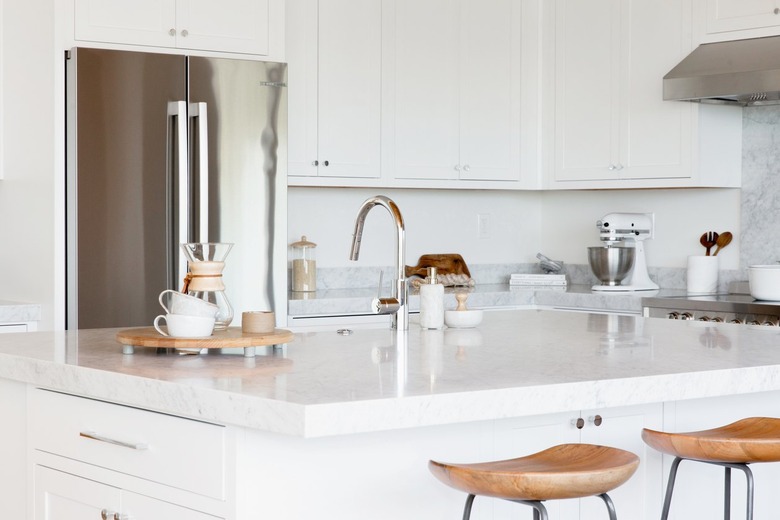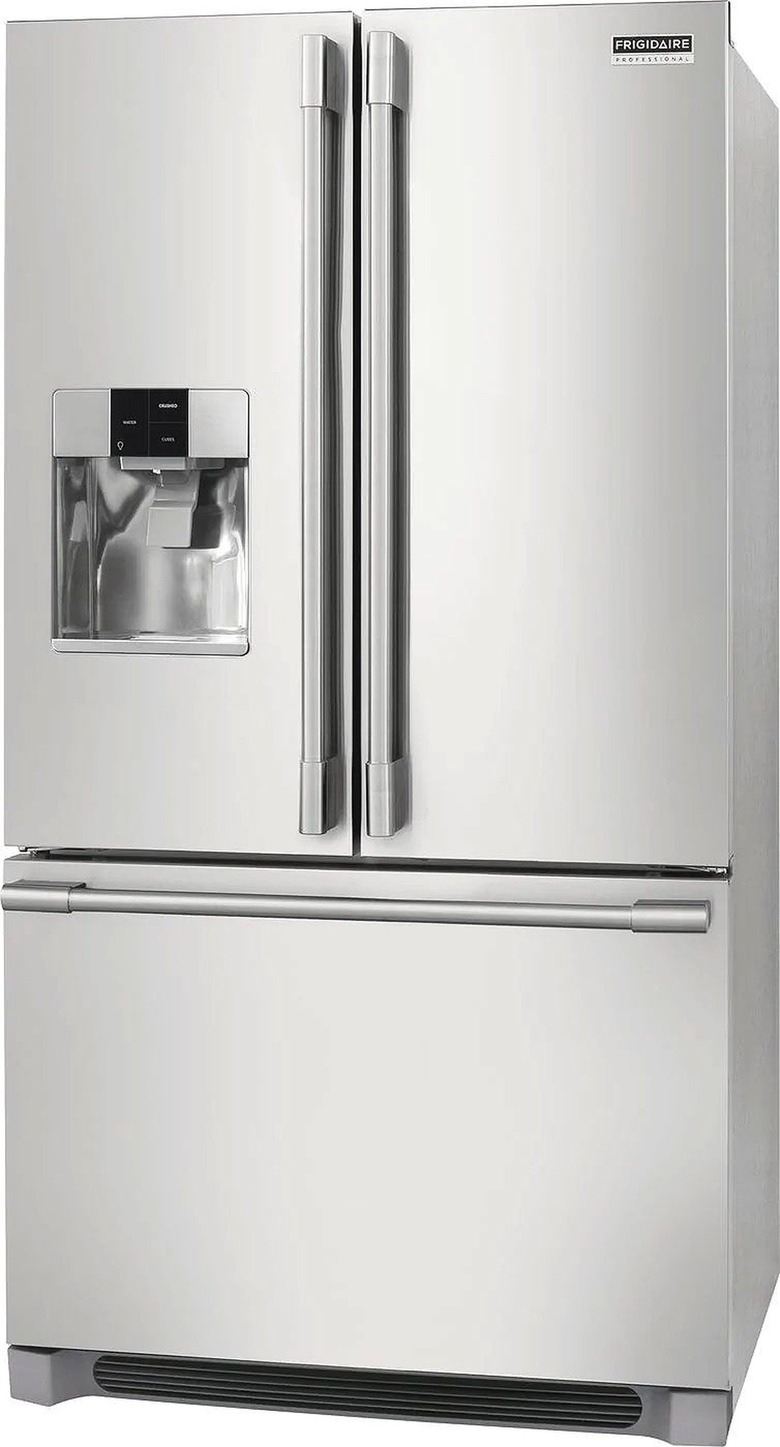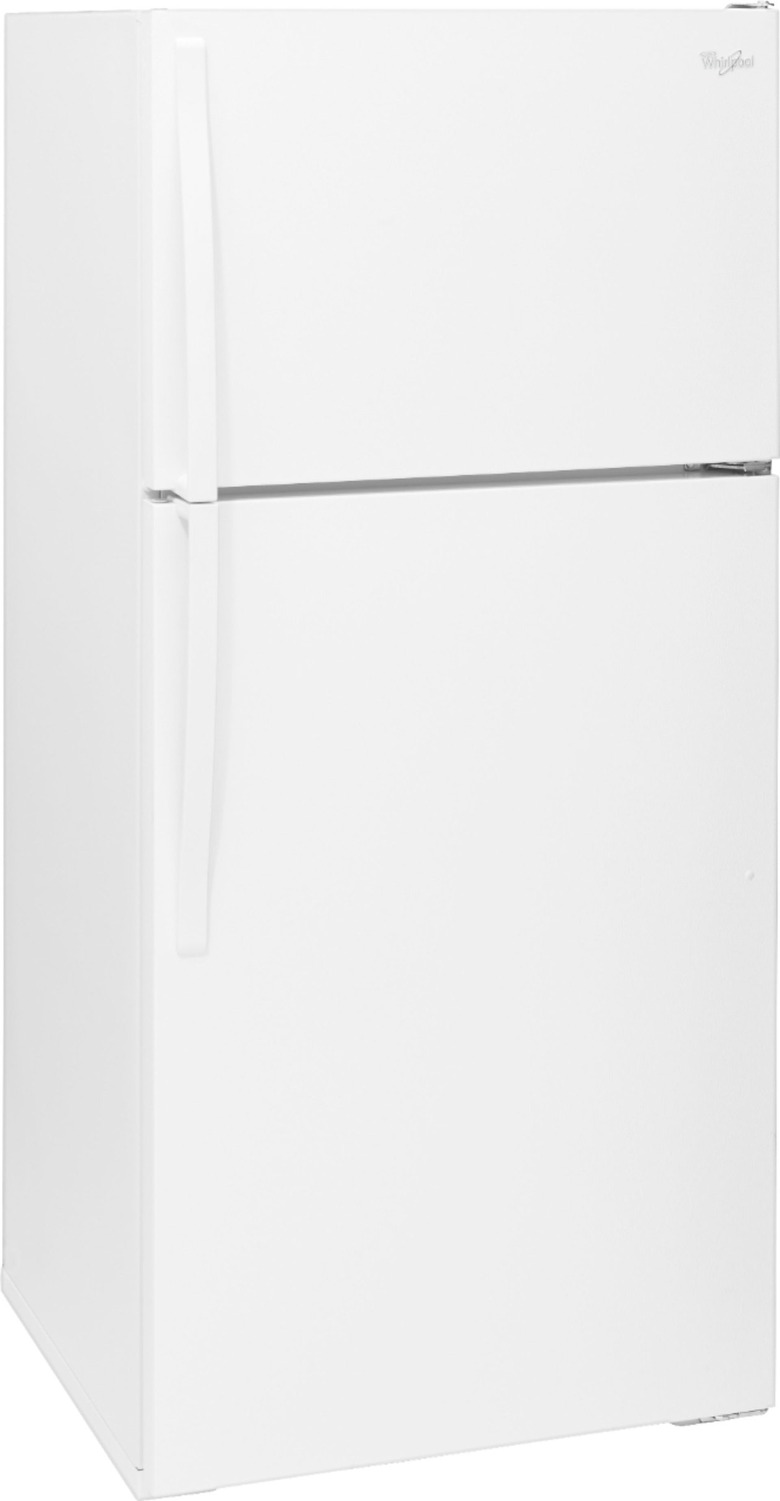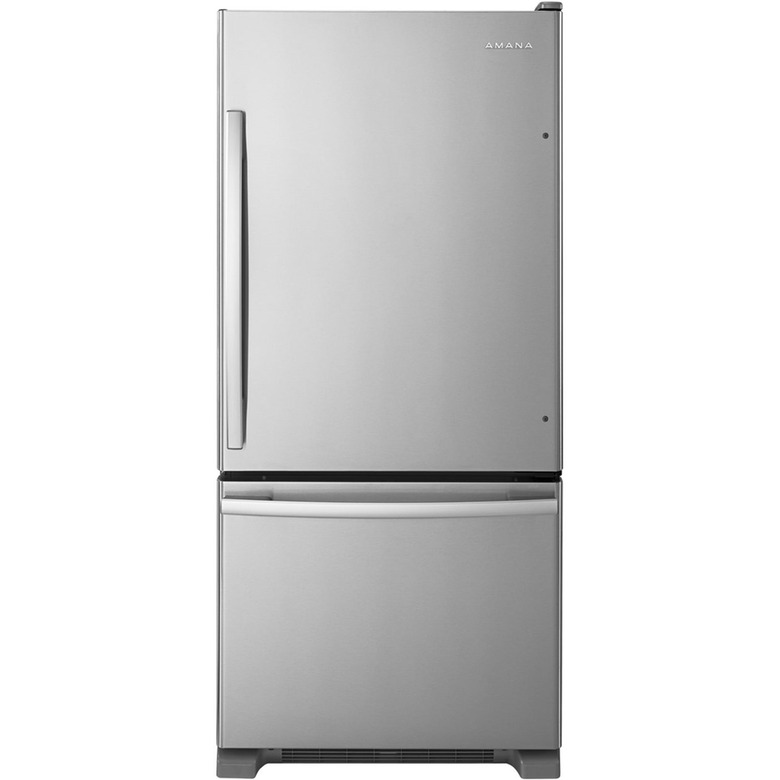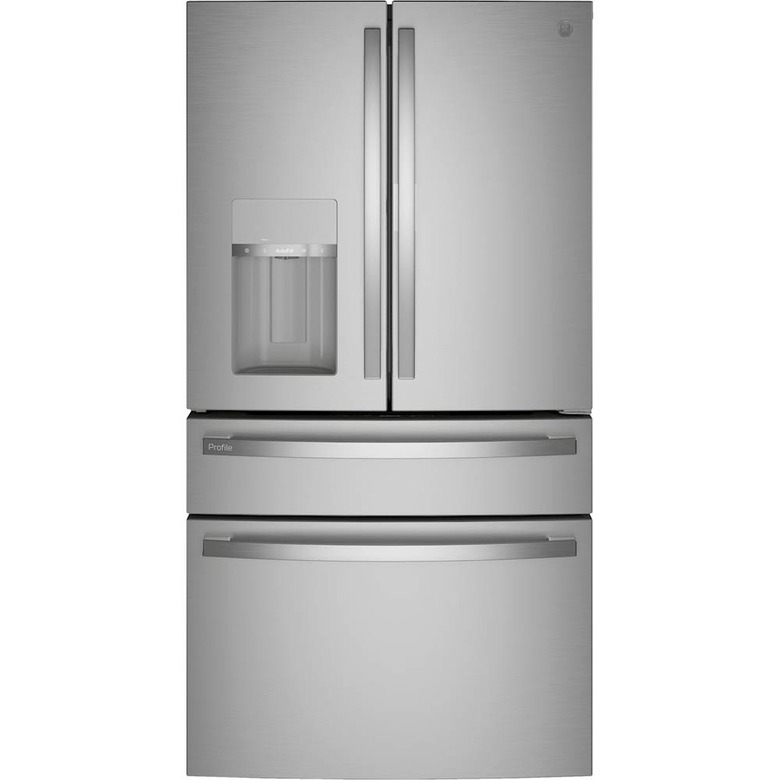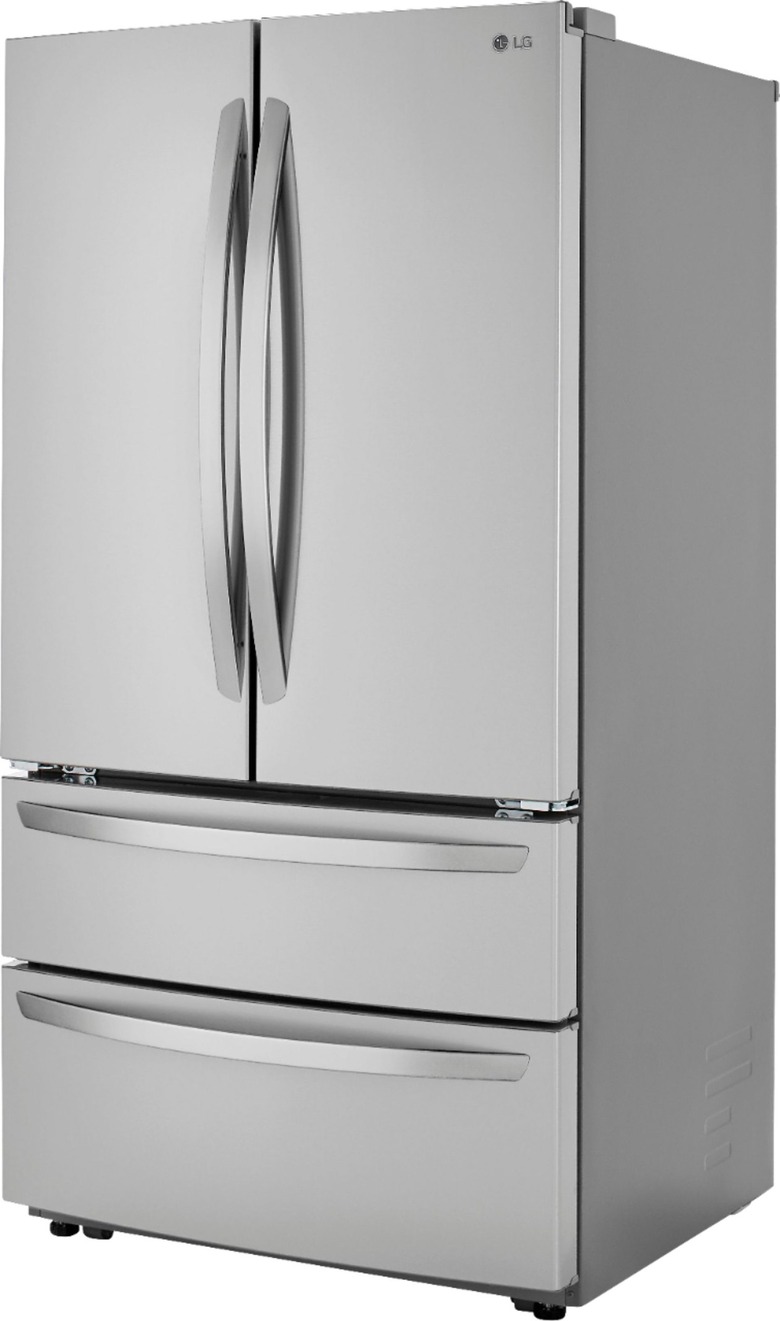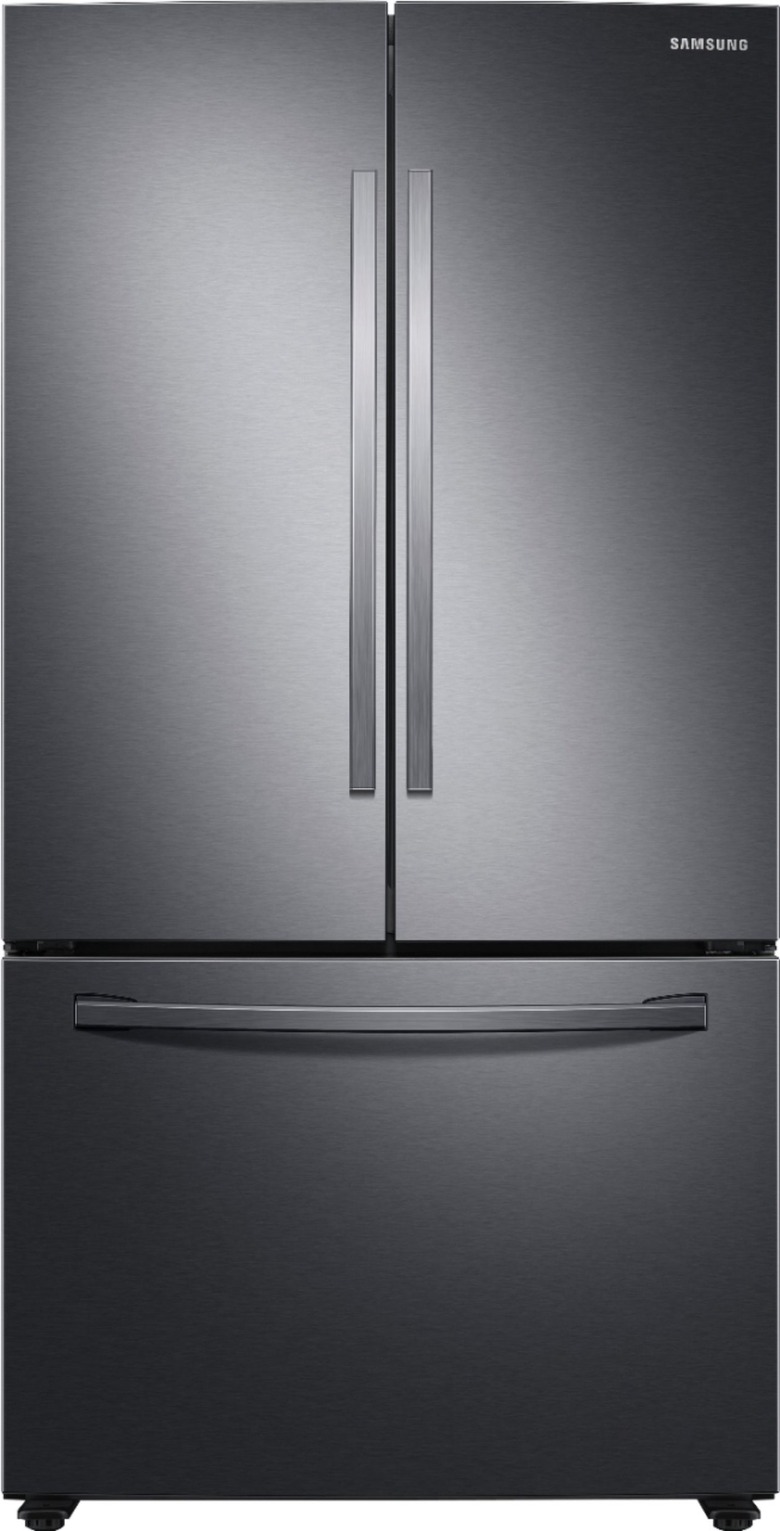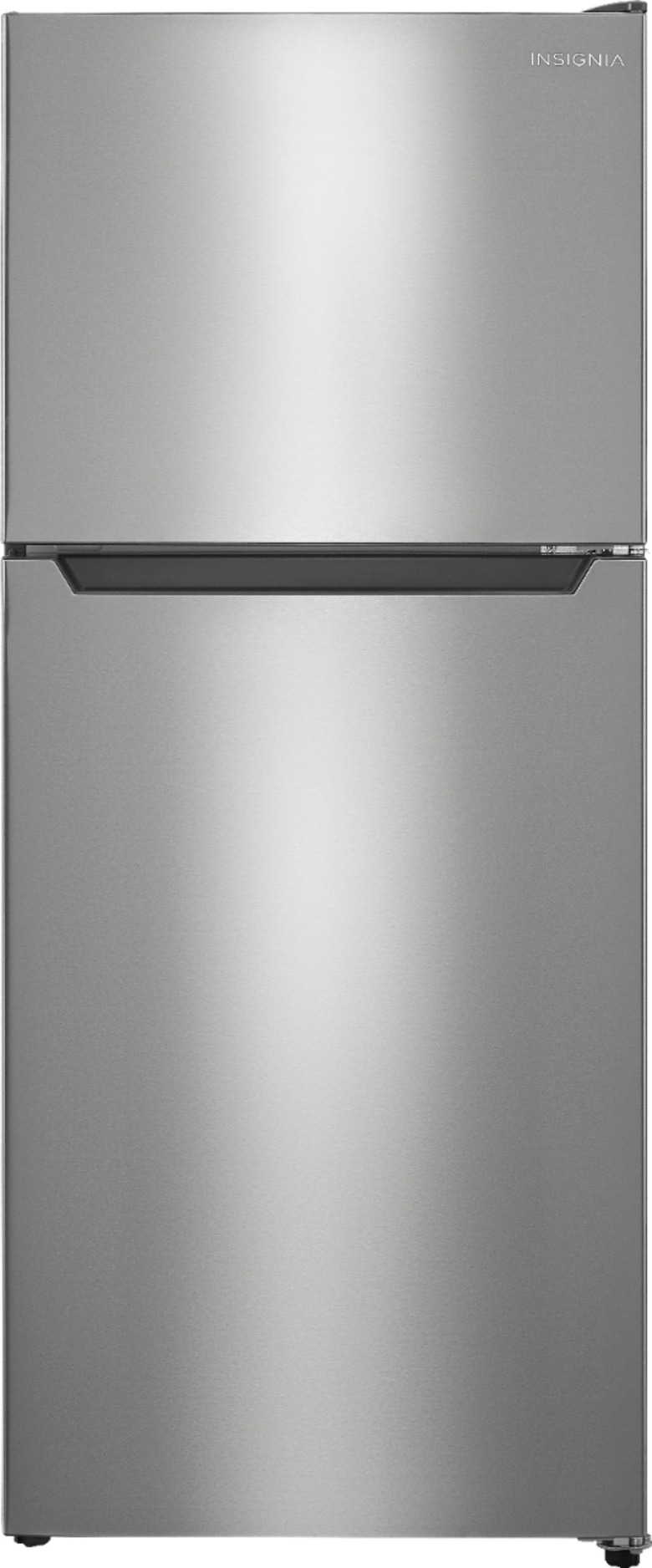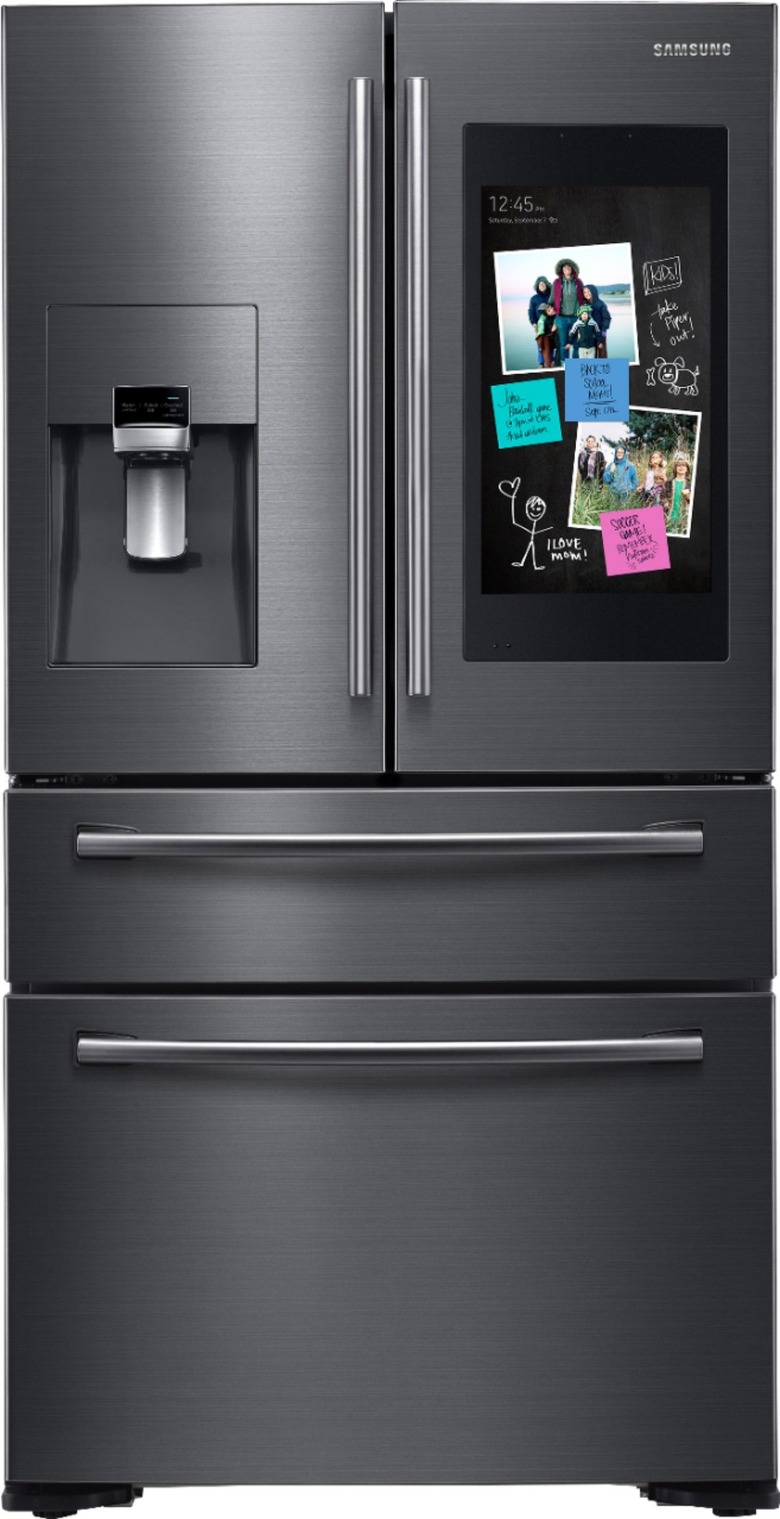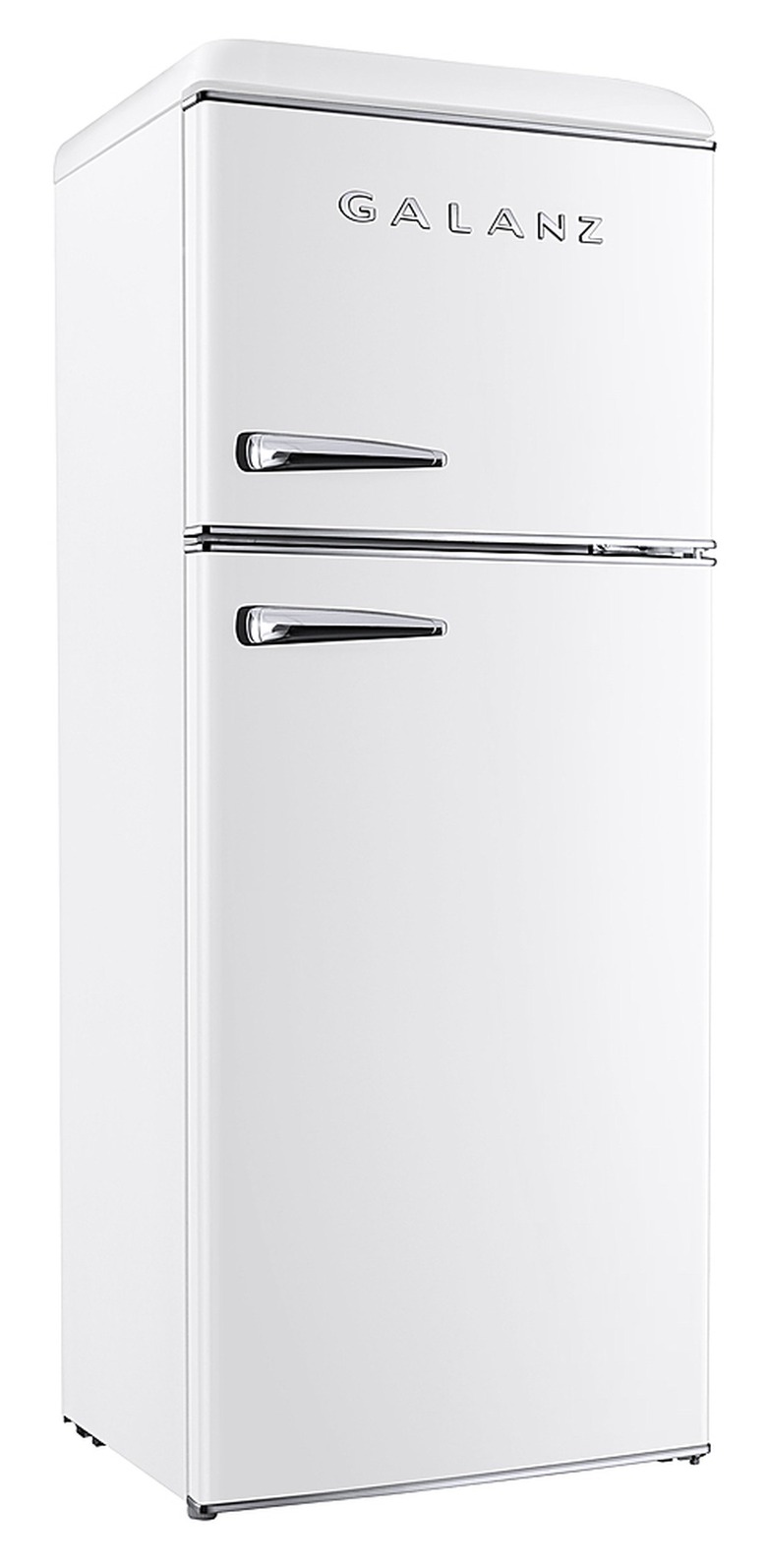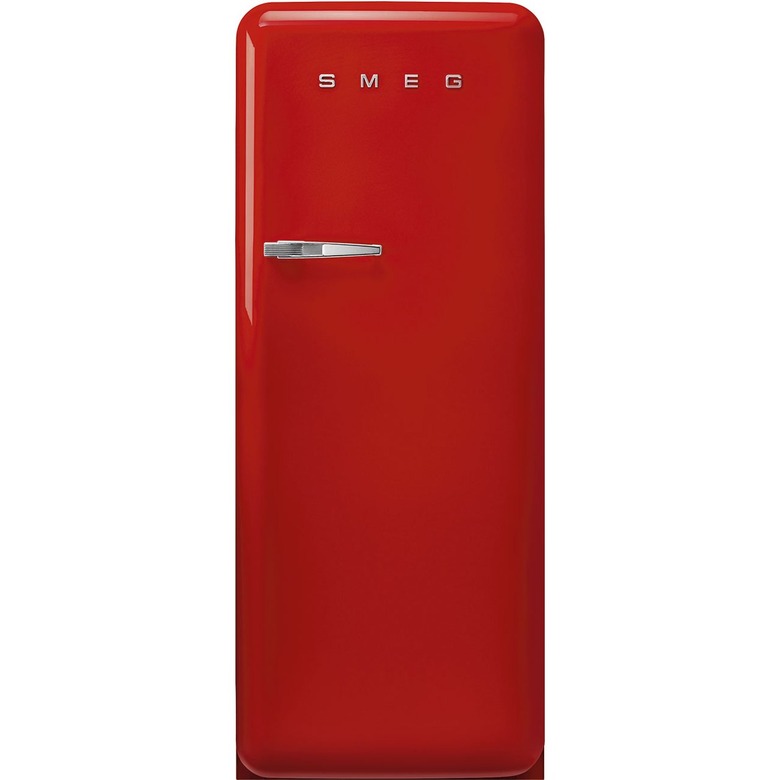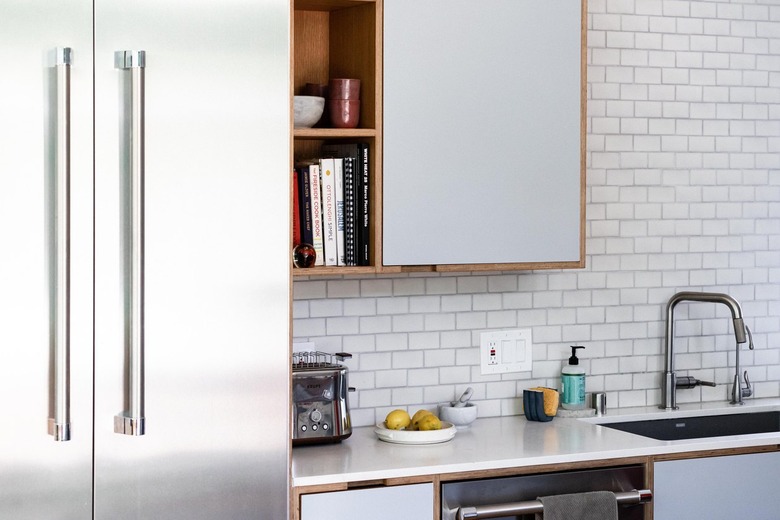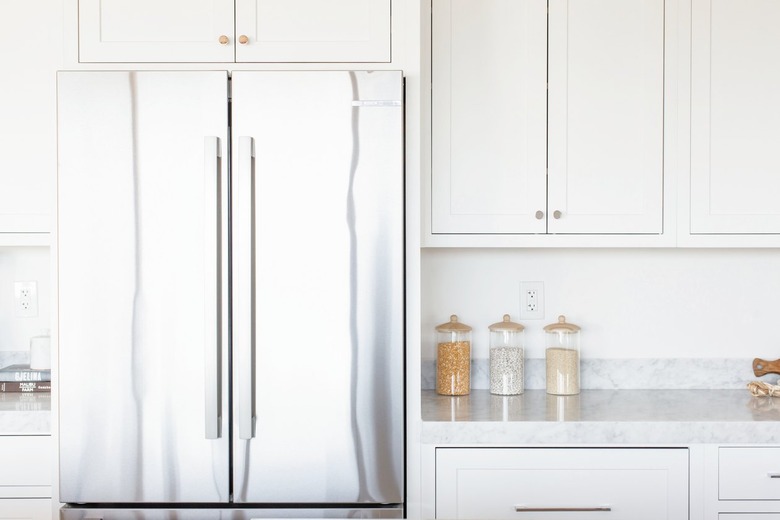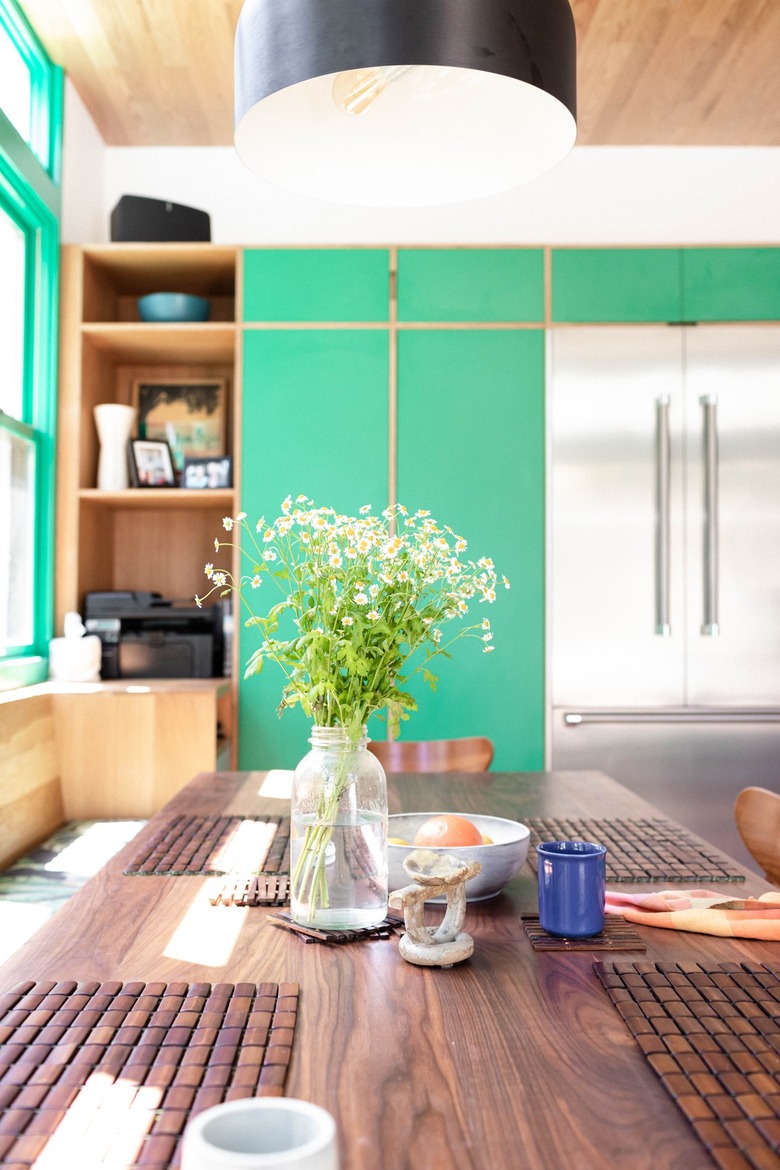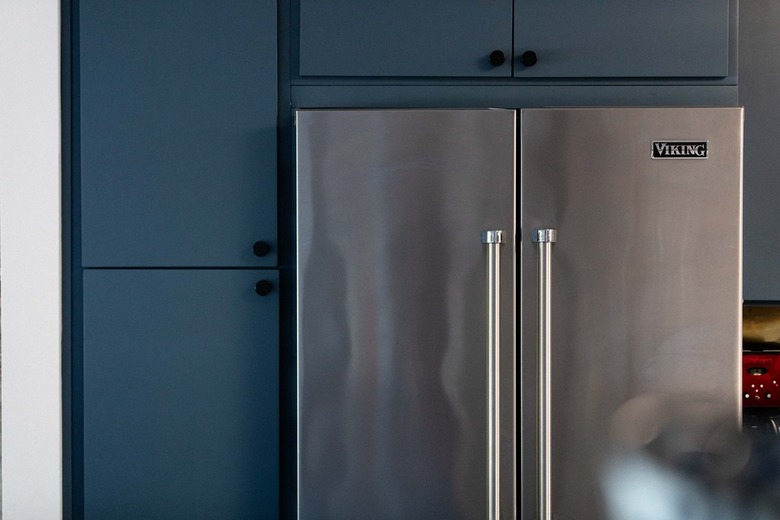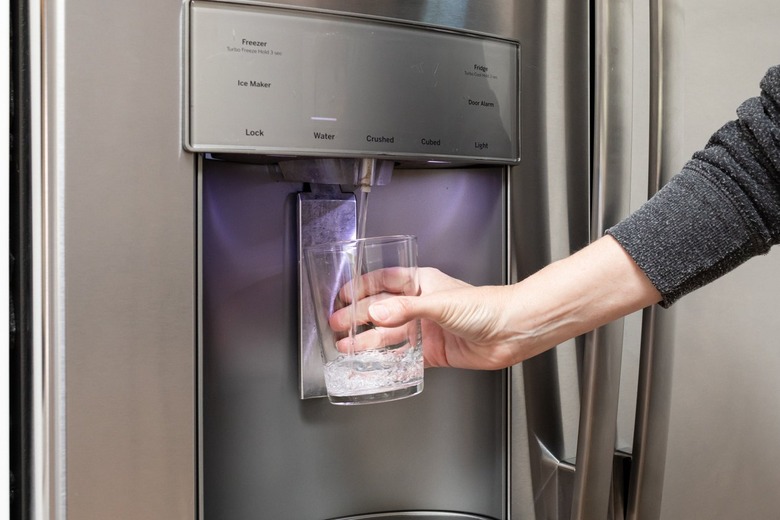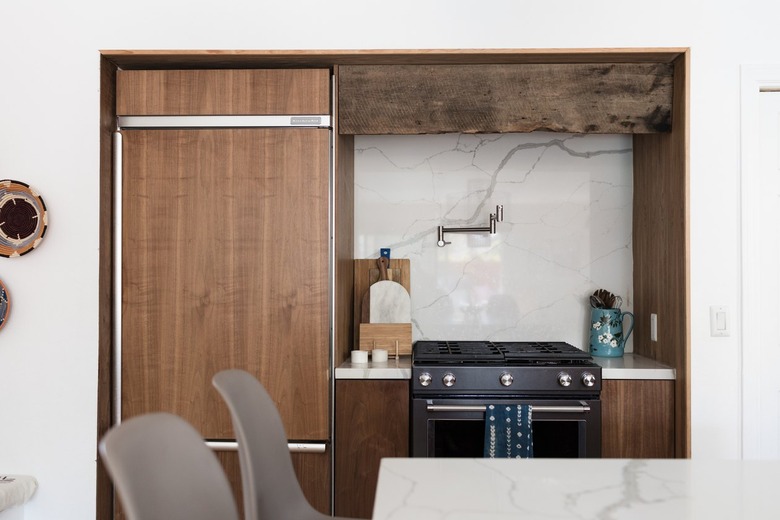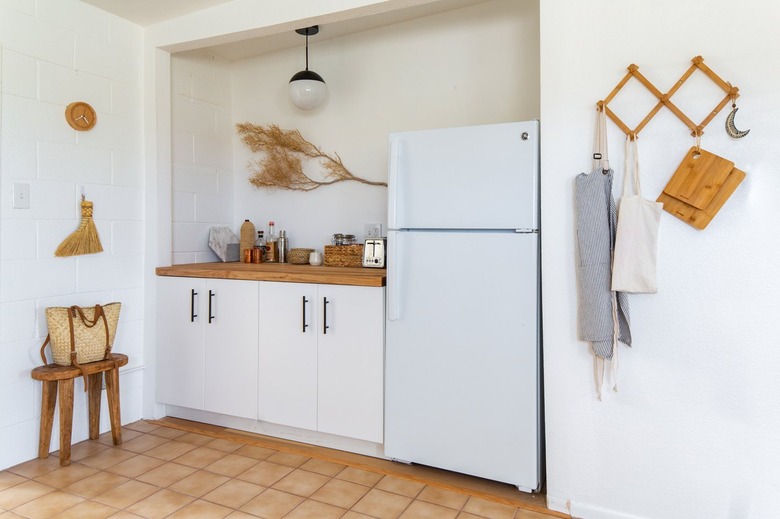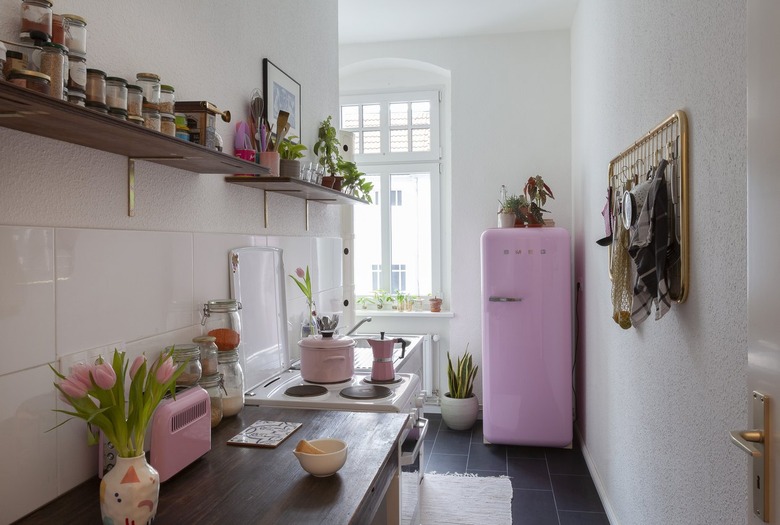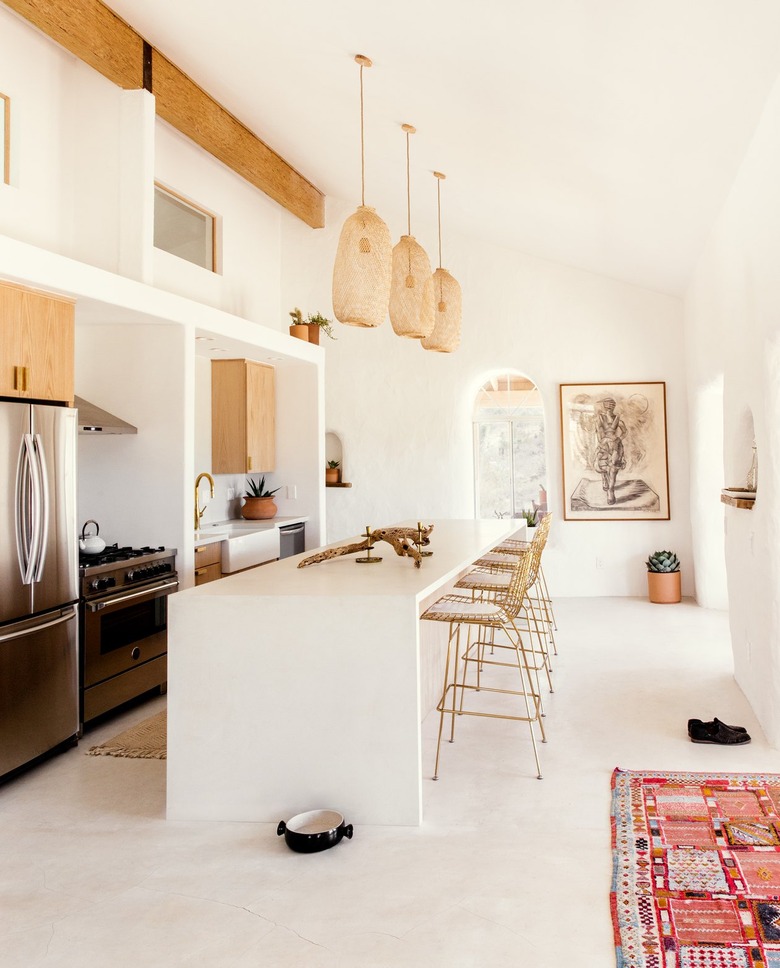What Is The Best Refrigerator For 2022? Our 10 Top Picks, Plus Shopping Tips
We may receive a commission on purchases made from links.
With so many styles and features to choose from, picking the best fridge for your kitchen may feel a bit overwhelming. The good news is that it's really not as difficult as it seems. Most of the choices you'll make along the way will depend on your personal tastes, how you use your refrigerator, and your budget. There are a lot of choices, but there are no wrong answers as long as your new appliance fits comfortably in your cook space.
There are a few useful things to keep in mind though. First of all, you might find yourself asking, "Which refrigerator brand is the most reliable?" Although it can depend on current models and features that are available, J.D. Power does release a yearly Kitchen & Laundry Appliance Report, and as of 2020, it ranked Samsung the highest in customer satisfaction for French door refrigerators. For side-by-side refrigerators, LG ranked the highest, and for top-mount freezer options, Samsung took the title again. These are considered the refrigerator brands with the least problems.
Again, it's up to you to select the one that feels right in your kitchen and serves your needs the best, but it can help to be prepared with useful information. Let's get started!
Refrigerators Worth Considering, Plus Their Pros and Cons
Refrigerators Worth Considering, Plus Their Pros and Cons
1. Best Fridge For Large Households and Serious Culinarians: Frigidaire Professional 36-inch French Door Refrigerator, $2,849
Pros: At 36-inches wide, this design fits the "standard refrigerator" profile, but it's anything but standard. It has cool features like French doors, multilevel LED lighting, and it even has a removable wine rack.
Cons: The price is up there, surpassing the average cost of a refrigerator by $1,000.
2. Best Fridge for Two-Person Households: Whirlpool 14.3-cu ft Top-Freezer Refrigerator, $609
Pros: This fridge is great for a two-person household, as it has the recommended 14 cubic feet. Plus, you can't beat that price point.
Cons: It doesn't come in stainless steel.
3. Best Fridge for Those Who Want a Fridge at Eye-Level: Amana 18.6-cu ft Bottom-Freezer Refrigerator, $1,443
Pros: As mentioned, fridges with a bottom freezer configuration tend to be the most convenient.
Cons: It doesn't have French doors, which would make it even more convenient.
4. Best Fridge for the Environmentally Conscious: GE Profile 27.9 cu. ft. Smart 4-Door French Door Refrigerator with Door in Door in Fingerprint Resistant Stainless Steel, $3,418
Pros: It has the Energy Star label and still has impressive features, like a filtered water dispenser, smart touches, and tons of storage.
Cons: It naturally comes with a big price tag, so this isn't the most budget-friendly buy.
5. Best Fridge for Those Who Want Extra Room and a Water Dispenser: LG Electronics 26.9 cu. ft. 4-Door French Door Refrigerator with Internal Water Dispenser in PrintProof Stainless Steel, $1,998
Pros: Ultra-large capacity, a fingerprint-resistant finish, and a filtered water dispenser.
Cons: With this one, you'll only be getting the water dispenser — it doesn't come with an ice dispenser.
6. Best Fridge for Those Who Want to Use Less Energy: Samsung 28 cu. ft. Large Capacity 3-Door French Door Refrigerator, $1,799.99
Pros: This model has LED lighting, a large capacity, and it's Energy Star-certified to boot.
Cons: It's not app compatible, so if you desire a fridge that connects to your phone, this isn't the one for you.
7. Best Fridge for Small Kitchens: Insignia 10.5 Cu. Ft. Top-Freezer Refrigerator, $359.99 – $379.99
Pros: Coming in a little less than 24 inches wide, this baby will fit in the teeniest of kitchens.
Cons: Naturally, it lacks a lot of amenities, like an ice maker and extra storage space.
8. Best Fridge for Tech-Savvy Individuals: Samsung 27.7 cu. ft. Family Hub 4-Door French Door Smart Refrigerator in Fingerprint Resistant Black Stainless Steel, $3,508
Pros: WiFi enabled? Check. The ability to play music? Check. A digital bulletin board? Check.
Cons: If you're not interested in loads of features, like smart options and high-efficiency LED lighting, look for a more pared-down, budget-friendly fridge.
9. Best Fridge for the Budget-Conscious: Galanz GLR12TWEEFR Retro Top Mount Refrigerator, $796.65
Pros: Ideal for small spaces, and budgets, this best-seller on Amazon has retro flair and a fairly large capacity at 12 cubic feet. Plus, it has LED lighting and removable glass shelves.
Cons: Keep in mind that it is on the small side.
10. Best Fridge for Making a Statement: Smeg Refrigerator, $1,999
Pros: As one of the trendiest, aesthetically pleasing fridges around, Smeg is a beautiful, vintage-inspired choice. Also, there are lots of color options to choose from.
Cons: Coming in at only 9.2 cubic feet of space, it's a small fridge for a hefty price.
Additional Factors to Consider While Shopping
Choosing the Right Size Fridge
The best fridge is one that actually fits in your kitchen, so begin your quest by measuring your space. A standard refrigerator is 36 inches wide, but you can buy one as narrow as 24 inches if space is limited. Most standard units are between 67 and 70 inches tall and 29 to 35 inches deep. Remember to measure your doorways so you don't buy a fridge that you can't even get inside your house.
Built-ins are a slightly different animal. Built-in refrigerators nestle into the cabinets in your kitchen so that the door is flush with your cupboards rather than sticking out. Naturally, this variety costs a bit more and they are usually taller than freestanding fridges at up to 84 inches. Because they are the same cabinet and counter depth, built-ins are only 24 inches deep. However, since built-ins can be up to 48 inches wide, you can eke out some extra room.
When measuring, take into account the fact that refrigerators need adequate airflow to function properly. A fridge that's shoved up against a wall will get hot and have to work much harder. Make sure your new appliance will have at least 1 inch of clearance at the back and on both sides. You'll also need to leave room for the refrigerator door to open.
Storage Space Considerations
Measured in cubic feet, the interior dimensions of your refrigerator are critical. If it's just you, you probably don't want a cavernous fridge where things get lost, only to be rediscovered when they're moldy. Go too small with teenagers in the house, however, and you'll spend all of your free time running to the grocery store.
For a happy medium, Digital Trends recommends allowing 4 to 6 cubic feet of interior space for every adult in your home. If you tend to throw dinner parties or cook large holiday meals, add an extra 6 cubic feet of space. A family of four typically needs around 24 cubic feet of space, while a two-person household can get by with around 14 cubic feet.
Know Your Refrigerator Style
Just as they come in different sizes, refrigerators also come in different shapes. Tried and true, you can still purchase a traditional option with a fridge on the bottom and a freezer on the top. According to Consumer Reports, a top freezer model tends to provide the most interior space relative to its size. With top freezers, you will, however, need to bend down to reach the crisper and food on the bottom shelf. This is where adjustable shelving can prove helpful.
If your primary concern is easy access, look at fridges with bottom freezers and fridges on the top. This configuration puts the fridge at the most convenient height. For added convenience, consider a design with French doors. A French door refrigerator doesn't open to full width and can save a lot of space in a cramped kitchen. You can still open both doors for large items, though, so you'll have no trouble tossing a pizza box in there and you'll have plenty of space for frozen foods.
You will, unfortunately, have trouble getting a pizza box into a side-by-side unit. In a side-by-side refrigerator, the freezer is on one side of the appliance, and the fridge is on the other. These are good for tight spaces, but you probably want to avoid them if you can. The doors don't open very wide, and they tend to be deep, meaning you'll frequently have to go treasure hunting at the very back of the refrigerator for the milk. They're also less energy efficient than other models.
The EnergyGuide Label
Whether you're looking to reduce your carbon footprint or simply want a lower electric bill, reading the EnergyGuide label will help you get there. Regulated by the U.S. Environmental Protection Agency (EPA), this label points out the key features of the appliance and tells you how much electricity it uses in a year on average. It also lists the annual operating cost based on average energy prices in the U.S.
When examining the label, check the bottom right corner for the Energy Star logo. Awarded by the EPA, the Energy Star designation means that it's at least 15 percent more efficient than the minimum efficiency standard set by the U.S. government. You may pay a higher price to get an energy-efficient fridge, but that doesn't mean you're not getting a good value. A less-expensive model that consumes large amounts of electricity may cost you more in the long run.
The Energy Star website maintains a list of appliances that have earned the Energy Star designation. Checking it can help you narrow your choices before you start shopping. You can also verify that a particular fridge has the Energy Star designation before you buy it.
Water and Ice Dispensers
Appliance shoppers today usually have one of two opinions about an automatic ice maker. Some absolutely love the convenience, and others view them as a waste of space. Whether or not to get one is a personal choice, but you might struggle to find a model without this feature, which is fairly standard in 2021. If you get an ice maker and find you don't use it, you can always turn it off or even remove it altogether.
You'll find a similar difference of opinion when it comes to fridges with water and ice dispensers on the door. This feature was all the rage some years ago, and it is convenient. Unfortunately, water dispensers require a lot of moving parts to work, and as such, they often didn't. Service calls on water dispensers were common, and some consumers decided they weren't worth the hassle.
Like the ice maker decision, this one is largely personal. You can find great options with and without this feature, and the choice is entirely yours. If you do opt for a dispenser, however, make sure it has a water filter and find out how expensive the filters are and how difficult they'll be to change.
Must-Have Features
Hopefully, the new refrigerator you choose will be with you for many years. The relationship will prove to be a happier one if you treat yourself to a few useful features. Always opt for glass shelves since they're easier to clean, and you can easily see through them when looking for certain items. Adjustable shelves are a must and should be easy to maneuver.
Some refrigerators offer vacuum-sealed crisper drawers, and these will keep your vegetables fresher, longer. Look for multiple climate-control settings that let you change the settings in various drawers to accommodate meat, cheese, or fruit as needed. The door within a door is another excellent feature in which a small door is added to the main door. These door bins grant you easy access to condiments, milk, and other items that you reach for often without opening the larger refrigerator door.
Many modern fridges also include a second evaporator. The evaporator is the part of the fridge that makes cold air, and usually, the refrigerator and freezer share one unit. This can cause the food in your fridge to get too much cold air while the freezer is cooling down and vice versa. A second evaporator solves this problem and keeps freezer smells and other funky odors from creeping into your fridge and taking hold.
Remember the little things, too. Small but mighty, LED lighting is efficient, long-lasting, and eliminates the hunt for that special appliance bulb when the light burns out. It's also important to make sure drawers slide open easily and that the doors will swing shut with just a tap when your hands are full.
Small Kitchens
For a small kitchen, even though you may be dreaming of a fridge with tons of storage space inside, it's just not possible if you're working with a tight squeeze. Instead, seek out smaller versions with all the bells and whistles you're looking for. For example, a fridge with a water and ice dispenser is still possible even in pint-sized kitchens.
Also, don't forget about counter depth, or the area between the fridge and the edge of your counter. Those inches matter. And lastly, don't overlook how far a refrigerator door will swing out. In a tiny kitchen, if you haven't taken into account measurements ahead of time, that door could end up hitting the island or countertop every time you open it.
Smart Kitchens
Smart kitchens, otherwise known as cook spaces outfitted with all the latest WiFi gizmos, often have things like ovens that let you pre-heat even if you're not home and microwaves that respond to voice commands. Refrigerators have gotten smart, too. Oftentimes, these models showcase seemingly space-age elements like touch screens where you can create grocery lists, notifications sent to your phone (i.e. for when your hot water is ready), sensors that open the doors automatically, and sensors that know when the doors have been left open and will shut them for you.
The good news is that smart fridges aren't as expensive as they once were, so if this idea appeals to you, you just might be able to make one work with your budget.
Budget-Friendly Kitchens
Maybe your bottom line is the most important thing to consider when shopping for a refrigerator. In that case, there are certain wallet-friendly features to seek out. First, it's important to look for a fridge in which the freezer is on top — fridges with freezers on the bottom tend to be more expensive. French doors can up the price, too. And that fingerprint-resistant stainless steel? It's likely more costly than its black or white counterparts.
Looks Are Important, Too
How it functions is, of course, the most important part of a refrigerator, but you do have to look at the thing every day, so it should be pretty, too. White finishes work in white kitchens and bright spaces, but they do show dirt. Black is quite popular as well, but it shows fingerprints and smudges unless you opt for a matte finish.
Colors work for some kitchens, but stainless steel is by far the most popular finish available today. Brushed and black fingerprint-resistant stainless steel hides smudging better than almost any other surface, and they're easy to keep clean. You can also choose to have integrated refrigerator that matches your kitchen cabinets and allows your fridge to blend in seamlessly.
Exterior finish is another choice that largely comes down to personal preference. Appliance manufacturers know that homeowners need a fridge that they can easily wipe clean, and they've all obliged. Some may smudge more easily than others, but none are difficult to care for.
So, What Is the Best Fridge?
So, What Is the Best Fridge?
Given such a wide variety of features and choices, it's easy to see that there is no one best fridge for every homeowner. Some of 2021's fridge models are rated better than others, however.
U.S. News and World Report has the fingerprint resistant stainless steel Maytag French door refrigerator as its top pick, with its PowerCold® temperature controls that can cool down the fridge quickly. Good Housekeeping went with the GE Profile Series French-Door Refrigerator as its Best Overall Refrigerator for 2021, featuring top-notch humidity controls and a Keurig K-cup brewing system. The New York Times prefers the Whirlpool French Door Refrigerator, sporting LED interior lighting and 25 cubic feet of space.
But the bottom line is that your choice depends completely upon your lifestyle and needs. So, weigh the pros and cons, and select a refrigerator that will take you through 2021 and beyond.
